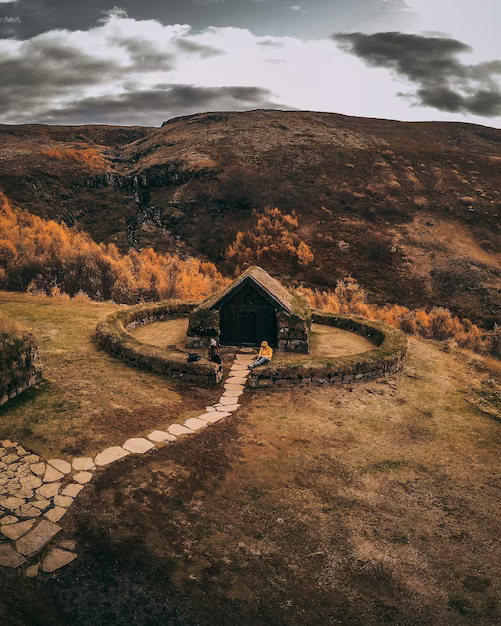
Situated in Cornwall, Pennsylvania, the Cornwall Iron Furnace serves as an emblem of the American Industrial Revolution’s vibrant history. Operational from 1742 until 1883, this furnace produced a substantial amount of the iron needed to support the burgeoning nation’s growth. Today, it stands as a testament to our industrial past, offering valuable insights into early manufacturing techniques and the working conditions of the era.
Historical Overview
Early Beginnings
In 1737, Peter Grubb, a stone mason, discovered a significant deposit of magnetite, a high-quality iron ore, near the site where the furnace would be constructed. Recognizing the potential of this find, he established the Cornwall Iron Mines, which eventually led to the construction of the Cornwall Iron Furnace in 1742.
Growth and Expansion
Peter Grubb’s sons, Curtis and Peter Jr., inherited the furnace and the mines in 1754. They expanded the operations by constructing additional furnaces and forges. During the American Revolution, the Cornwall Iron Furnace produced ammunition and cannons for the Continental Army, solidifying its place in the nation’s history.
Later Years
In 1798, Robert Coleman, a prominent figure in Pennsylvania’s early history, acquired full ownership of the furnace and mines. Under his control, the operations continued to flourish. In 1883, however, the Cornwall Iron Furnace ceased its operations due to advancements in steel manufacturing and the depletion of nearby forests for charcoal production.
Architectural Design
The Cornwall Iron Furnace’s architectural design embodies the functional aesthetics of its era. The centerpiece of the complex is the stone furnace stack. Constructed from locally sourced sandstone, this imposing structure stands over 32 feet high. Its base measures approximately 31 feet square and tapers to a 15-foot square at the top.
The interior of the furnace, known as the crucible, had a maximum width of 12 feet and a depth of 8 feet. It could hold up to 6 tons of material for each smelting operation, which included iron ore, charcoal, and limestone.
The furnace’s “charging hole” was located at the top, where workers, known as ‘fillers,’ would load in the raw materials. On the side, there was a “casting arch,” from which the molten iron, called ‘pig iron,’ was let out onto a sand casting floor, creating the iconic ‘pigs’ of iron that gave the product its name.
The Ironmaking Process
The Cornwall Iron Furnace utilized a technique called ‘blast furnace’ iron smelting. This process involved several steps:
- Charging: Workers would load the furnace with layers of iron ore, limestone, and charcoal.
- Combustion: A blast of air, heated by passing through a series of stoves, was introduced to the furnace, promoting the combustion of charcoal, which in turn produced the necessary temperatures (up to 3000 degrees Fahrenheit) to melt the iron.
- Smelting: The heat caused the iron ore to react with the carbon monoxide produced by the burning charcoal, reducing the iron ore to molten iron. The limestone acted as a flux, combining with impurities to form slag, which was lighter and floated on top of the denser molten iron.
- Casting: The iron and slag were separately drained out of the furnace through different channels. The iron was cast into ‘pigs’ on a sand floor, while the slag was discarded.
The Furnace Complex
The Cornwall Iron Furnace was not an isolated structure. It was part of a complex that included several other buildings integral to the ironmaking process.
- Charcoal Barns: These were large, well-ventilated structures where the charcoal, a key ingredient in the smelting process, was stored.
- Roasting Sheds: Here, the iron ore was heated to remove any moisture and make it more reactive in the furnace.
- Casting House: This was where the molten iron was cast into pigs. It was typically located adjacent to the furnace.
- Blast Machinery: This consisted of the waterwheel-powered bellows or, in later years, steam-powered blowers that provided the necessary air blast for the furnace.
Impact and Legacy
The Cornwall Iron Furnace played a pivotal role in shaping not just the local community, but also the broader region’s economic and industrial growth. Its iron was used in a variety of products, ranging from household items to weaponry for the American Revolutionary War.
With its cessation of operations in the late 19th century, the furnace was preserved as a historic site, offering visitors a unique opportunity to step back in time and appreciate the toils and achievements of our industrial forebears.
Today, the Cornwall Iron Furnace is the only surviving intact charcoal cold blast furnace in the Western Hemisphere and is designated a National Historic Landmark. Its preservation allows for the continued study and appreciation of early American industry, technology, and labor history.
In the grand tapestry of American history, the Cornwall Iron Furnace is an enduring thread that weaves together the narratives of technological innovation, industrial growth, and human endeavor. As we look upon its towering stone edifice, we are reminded of the grit, resilience, and ingenuity of the early ironworkers, who helped lay the foundation for the modern America we know today.

Leave a Reply